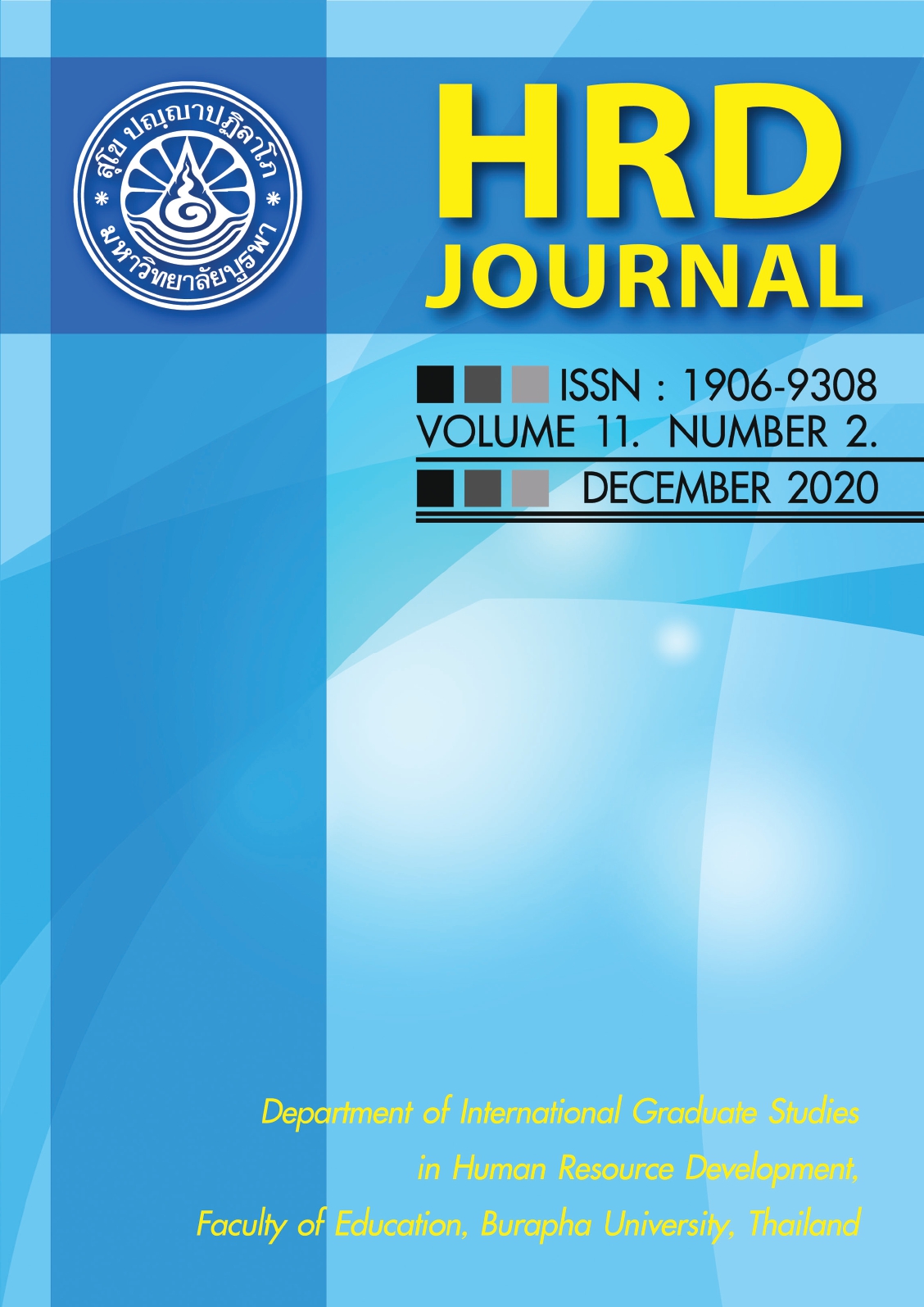An Innovative Pedagogical Practice Models for English Teachers: A Case Study at Srisuvit School, Thailand
Keywords:
English pedagogy, Innovative mode, English teaching model, Systematic English teaching, Systematic English teaching modelAbstract
This study explored the pedagogical English teaching model by analyzing the data from the classroom action research conducting at Srisuvit School. The research objectives were to: 1) compose a systematic English teaching model being implemented at the school. 2) explore the factors that help English teachers at the school be competent in English teaching. 3) explore English teaching activities appropriate with different grade levels of students and 4) explore how those teachers work together in teaching English at the school. The research approach is a Mixed Methods, using Concurrent Embedded design strategy. The informants who provide the research data were eight pairs of English teachers at the English Department at the school with the total of 16 teachers. The data analysis for the quantitative research methods was a mean to measure the teacher competency and attitude towards teaching English as well as students’ attitude toward English learning. The data analysis for a qualitative data was done through manual coding and categorizing then interpreting the data. The research results were as follows: 1) the systematic English teaching model composed of seven elements, they were: school culture and policy, parents’ participation, English learning environment, teacher’s self-development, student’s individual differences, teaching pedagogy, and students’ learning achievement, 2) the factors that help teachers be more competent in teaching English were: working together in pair, application of teaching pedagogy, 3) approaches those suit the different grade level of student’s abilities: letting student work in group, giving student encouragement and motivation, using songs, making them relax and comfortable, letting student do self-evaluation, and building the English learning atmosphere and 4) the ways that teachers work together are: the more experienced teachers work with the less experienced teachers, identifying the problem together, analyzing the problem together, planning the lesson together, and having discussion after class. It is recommended that the parents’ participation element of the English teaching model should be the most beneficial to any private schools.
References
Corder, P. (1967). The significance of learner's errors. International Review of Applied Linguistics, 5, 161-170.
Jane, E. B. (2001). The use of cooperative learning techniques in a community college course. Doctoral dissertation, St. Francis Xavier University, Canada.
Long, M. (1996). The role of the linguistic environment in second language acquisition. In R. William, & B. Tej (Eds.), Handbook of second language acquisition (pp. 413-468). San Diego: Academic Press.
Nadler, L., & Nadler, Z. (1970). Developing human resources. San Francisco, CA: Jossey-Bass.
National Education Commission Office. (1999). National Education Act of B.E. 2542. Bangkok, Thailand: Seven Printing Group.
Peck, S. (1996). Language learning diaries as mirrors of students’ culture sensitivity. In K. M. Bailey and D. Nunan (Eds.), Voice from The Language Classroom (pp.236-247). Cambridge, Cambridge University Press.
Profession Learning Community (PLC). (n.d.). In Wikipedia. Retrieved from https://en.wikipedia.org/wiki/Professional_learning_community
Schmidt, R. W. (1990). The role of consciousness in second language learning. AppliedLinguistics, 11(2), 129-158.
Second Language Acquisition (SLA). (n.d.). In Wikipedia. Retrieved from https://en.wikipedia.org/wiki/Second-language_acquisition
Selinker, L. (1972). Interlanguage. IRAL, 10, 209-231.
Swain, M. & Lapkin, S. (1995). Problems in output and the cognitive processes they generate: A step toward language learning. Applied Linguistics, 16, 371-391.
VanPatten, B., & Benati, A. G. (2010). Key terms in second language acquisition. London: Continuum.
Wongsothorn, A. (1999). Reflection and projection on Thailand’s language education policy for the new millennium. PASAA, 29, 54-64.
Downloads
Published
How to Cite
Issue
Section
License
Copyright@HRD Journal, Burapha University






